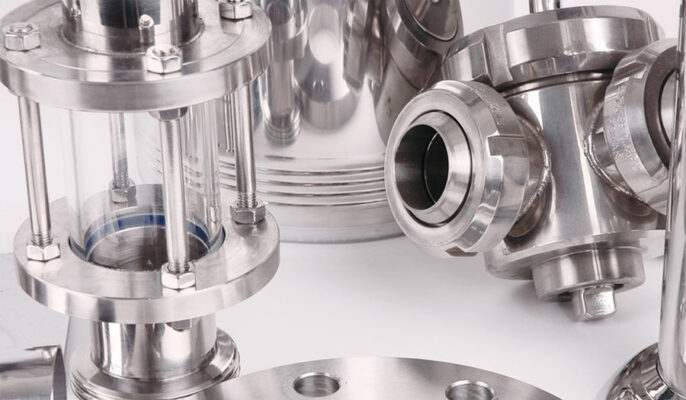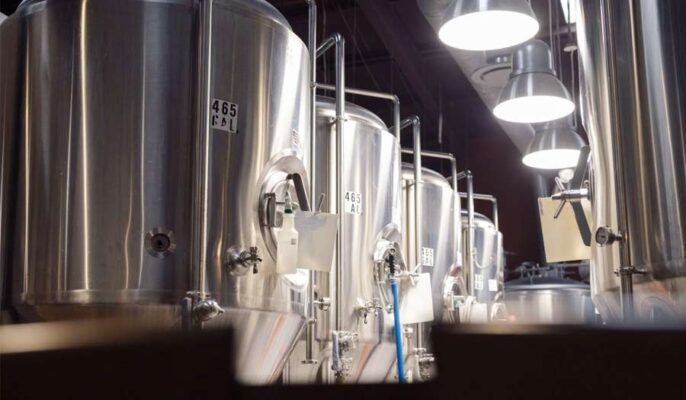Beer automatic brewing equipment refers to the various machines and systems used to automate the beer production process. This equipment allows for efficient large-scale brewing with minimal human intervention. Automating the brewing process improves consistency and frees up labor for other tasks.
This guide provides a comprehensive overview of beer automatic brewing equipment, covering the key types, characteristics, applications, specifications, suppliers, installation and operation guidelines. It also includes tips on selecting equipment and a comparison of the pros and cons of automating brewing.
Overview of Beer Automatic Brewing Equipment
Automating the brewing process involves using machines and control systems to complete the major steps of beer production with minimal human input. The goals are to improve efficiency, increase batch-to-batch consistency, and reduce labor costs.
Key equipment used includes:
- Automated brewing systems – Integrated platforms that control the full brewing process from mashing to fermentation.
- Individual automated machines – Standalone units like robotic arms, conveyors, sensors and pumps that automate specific tasks.
- Software and controls – Brewery management systems and programmable logic controllers to monitor and regulate equipment.
Automating even parts of the process like wort production or fermentation can improve efficiency. Fully automated breweries control the entire production from raw materials to finished beer.
Applications and Benefits
Beer automatic equipment provides the following benefits for commercial breweries:
- Increased production capacity – Make more beer in less time with faster automation.
- Improved consistency – Automated parameters like temperature and timing are precise.
- Cost savings – Reduce labor, waste and energy costs through optimization.
- Flexibility – Quickly adjust recipes and production schedules.
- Quality control – Sensors detect issues rapidly allowing quick response.
- Worker safety – Automating hazardous tasks like lifting and moving eliminates injuries.
- Data collection – Automated logging of all process parameters enables analysis.
Large breweries making over 100,000 barrels annually benefit the most from automation. Craft breweries can also automate individual tasks to boost efficiency.

Types of Beer Automatic Brewing Equipment
There are many types of standalone and integrated beer brewing machines:
Integrated Automated Brewing Systems
These turnkey systems automate the entire brewing process in a single platform:
- Purpose-built automated brewhouses – Custom engineered brewhouse solutions designed for full automation. All vessels and process control integrated.
- Retrofit brewhouse automation systems – Adds automation capabilities to existing manual brewhouses.
- Microbrewery automation systems – Compact, flexible systems sized for craft breweries. Fully automated brewing in smaller batches.
They control equipment like mills, mash converters, lauter tuns, wort kettles, whirlpools, fermenters, bright beer tanks using industrial computers and smart sensors. Programming recipes and schedules is easier.
Standalone Brewing Automation Equipment
Individual machines and components to automate specific functions:
- Conveyors – Automated conveyors move ingredients and materials between process stages.
- Silos – Bulk grain and hop silos with automated outloading to brewhouse.
- Milling – Automated roller and hammer malt mills with particle analysis.
- Mash filtration – Automated raking and filtering of mash.
- Wort separation – Automatic centrifuges separate wort from grains.
- Wort boiling – Automated wort kettles with precise heating and additions.
- Fermentation – Temperature controlled automated fermenters with cooling jackets.
- Yeast pitching – Automated yeast propagation and pitching.
- Storage – Automated temperature controlled storage tanks.
- Cleaning – Automated CIP systems clean and sanitize equipment.
- Packaging – Conveyors and robots to palletize, wrap, label and pack.
These components can be mixed and matched as needed. They are suited for semi-automation of select brewing stages.
Brewery Management Software
Software platforms to control brewing operations:
- Brewery ERP – Enterprise resource planning software ties together manufacturing, inventory, sales, accounting etc.
- SCADA – Supervisory control software monitors and regulates equipment.
- MES – Manufacturing execution systems manage production processes in real-time.
- PLC – Programmable logic controllers automate tasks in brewhouses.
Software is needed for automation to control equipment, optimize production, and collect data.
Specifications of Beer Brewing Automation Equipment
Key specifications vary based on equipment type and production scale:
Integrated Automated Brewhouses
| Parameter | Specifications |
|---|---|
| Batch sizes | 1 to 20 hectoliters typical |
| Production capacity | Up to 3 million hectoliters annually |
| Vessel volumes | Dimensioned based on recipes and batch sizes |
| Material | Stainless steel commonly used |
| Electrical load | High power needs for heating |
| Utilities | Steam, cooling water, CO2, compressed air |
| Control systems | Industrial PC and PLCs |
| Networking | Integration with brewery ERP and MES |
Standalone Brewing Automation Machines
| Equipment | Key Specifications |
|---|---|
| Conveyors | Length, width, speed, motor power, material construction |
| Silos | Volume, material, dust control, safety features |
| Mills | Rollers, motors, particle analysis, flow rates |
| Mash filtration | Rake design, filter area, wort separation efficiency |
| Wort separation | Centrifuge flow rates and g-force |
| Wort kettles | Volume, material, heating power, mixing |
| Fermenters | Volume, cooling area, temperature range |
| CIP systems | Flows, pressures, cleaning cycles |
| Packaging | Speed, material types, package formats |
Exact parameters depend on production goals, plant layout and budget.
Suppliers of Beer Brewing Automation
Major global suppliers of beer automated brewing equipment include:
Integrated Brewhouse Manufacturers:
- Krones (Germany) – Market leader in end-to-end systems.
- GEA (Germany) – Complete brewhouse solutions and control systems.
- Alfa Laval (Sweden) – Systems integrating modules from various brands.
- Craftwerk (USA) – Customized automated brewhouses for craft breweries.
Standalone Brewing Automation Suppliers:
- Briggs of Burton (UK) – Brewing vessels, fermenters, filtration.
- GEA Huppmann (Germany) – Conveyors, mills, mash filtration and packaging.
- Pentair (USA) – Filtration, tanks, automation equipment and parts.
- ABE (Netherlands) – Robotic packaging systems and software controls.
- Rockwell Automation (USA) – Sensors, drives, controllers.
Brewery Software:
- Ekos (USA) – Brewmaster brewery management software.
- HopSteiner (Germany) – Integrated ERP, MES and automation solutions.
- Brewmax (Canada) – Beer production management platforms.
Pricing varies based on the types of equipment, production capacity and degree of customization. Larger turnkey systems can cost several million dollars. Individual machines cost tens to hundreds of thousands.
Installing and Operating Beer Brewing Automation
Proper installation, operation and maintenance ensures maximum efficiency and longevity of beer automated equipment:
Installation Guidelines
- Carefully plan brewhouse layout and workflow before installation.
- Ensure sufficient space, wiring, ventilation and utilities for equipment.
- Follow all manufacturer assembly, calibration and commissioning instructions.
- Integrate control systems and test for full automation functionality.
- Train staff thoroughly on operating procedures.
Operation Procedures
- Measure ingredients accurately using automated weighing.
- Closely monitor each automated step and check for errors.
- Ensure timely cleaning and sanitizing of equipment between batches.
- Follow all safety procedures when working around conveyors and machines.
- Periodically re-test automation programs and sensors for optimal performance.
Maintenance Requirements
- Establish preventative maintenance schedule and checklists for each machine.
- Routinely inspect equipment for wear, leaks, loose parts.
- Lubricate and replace parts like bearings and seals as needed.
- Validate temperature sensors, pH meters and other instrumentation.
- Update software and cybersecurity measures.
- Document all maintenance activities and equipment performance.
Proactive operating procedures and preventative maintenance is key to maximizing production and minimizing downtime of automated brewing systems. Staff training is critical.

How to Select Beer Brewing Automation Equipment
Choosing the right automation equipment for your brewery involves:
- Assessing production goals – volume, brew styles, growth plans.
- Determining which stages of brewing to automate based on needs.
- Evaluating options from vendors on performance, cost, support.
- Prioritizing equipment capabilities – efficiency, consistency, flexibility etc.
- Considering staff willingness and ability to implement automation.
- Reviewing plant layout and utility availability for new equipment.
- Comparing upgrade costs vs operational savings from automation.
Key steps include:
- Develop automation goals aligned with business objectives. Get operator input.
- Map out current brewing process and identify bottlenecks.
- Research equipment options and get multiple vendor quotes.
- Calculate ROIs on automation investments factoring in total costs.
- Create implementation timeline with stages if needed.
- Select equipment and integrate into brewing process.
- Train staff on operating and maintaining new automation.
- Continuously collect data to refine programs and maximize performance.
Selecting the right automation equipment is a process of understanding needs, researching options, calculating costs and benefits, careful implementation and ongoing optimization.
Pros and Cons of Beer Brewing Automation
Automating the beer production process provides major benefits but also some downsides to consider:
Advantages of Beer Brewing Automation
- Increased consistency and repeatability between batches
- Ability to scale production efficiently
- Reduced operating costs through optimized processes
- Improved productivity through 24/7 unmanned operation
- Enhanced safety by eliminating dangerous manual tasks
- Tighter quality control through automation and data collection
- Flexibility to quickly test and adjust recipes at scale
Potential Drawbacks and Challenges
- High upfront capital investment required
- Complex programming and integration with existing systems
- Additional maintenance of mechanical equipment
- Loss of certain traditional manual brewing methods
- Increased energy consumption
- Potential technical issues disrupting production
- Need for highly skilled staff to operate automation systems
- Difficulty automating novel recipes or small batches
Weighing these factors helps determine appropriate level of automation for different breweries. Partial automation can provide benefits without as much cost and complexity.
FAQ
Q: What are the biggest benefits of automating the brewing process?
A: The main benefits are increased consistency between batches, higher production volumes and reduced labor costs through optimized processes. Automation also improves safety and quality control.
Q: What types of breweries use automated equipment?
A: Large breweries producing over 100,000 barrels per year benefit the most from automation. However, craft breweries are increasingly using automation for individual tasks to improve productivity.
Q: What are the main types of brewing automation equipment?
A: The main types are integrated automated brewhouse systems, standalone automation machines for specific tasks, and brewery management software like ERP and MES platforms.
Q: How much does it cost to automate a brewhouse?
A: Costs vary dramatically based on production volumes and degree of automation. Large turnkey systems can cost over $10 million. Individual automated machines like conveyors range from $50,000 to $500,000 each.
Q: What factors should you consider when selecting automation equipment?
A: Key factors are production goals, where automation is needed most, costs versus operational savings, equipment capabilities, staff readiness for automation, and plant layout and utility constraints.
Q: Does automating a craft brewery affect beer quality?
A: Automation improves consistency but brewmasters can program recipes to maintain quality and taste profiles. Partial automation balances efficiency with tradition.
Q: Can older brewhouses be retrofitted for automation?
A: Yes, many vendors offer solutions to add automated features like sensors, drives, controls and software to upgrade manual equipment.system upgrades provide flexibility.
Q: What are the biggest challenges of implementing brewery automation?
A: Challenges include high costs, technical complexity, change management and training for staff, integrating with existing systems, and mechanical maintenance.
Conclusion
Full or partial automation can provide significant benefits to beer breweries looking to scale production, reduce costs and improve quality and consistency. With thoughtful planning and selection of equipment matched to specific needs, brewers can realize increased efficiency and flexibility while still retaining the art and craft of great beer brewing. Ongoing data analysis and optimization is key to maximizing returns on automation investments.




